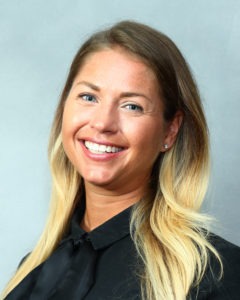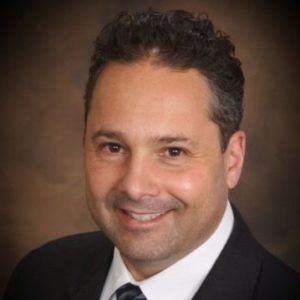How an Assisted Living Residence Used Anti-COVID Biotechnology to Reclaim Normalcy

Lindsay Harbison, Assistant Executive Director, The 80th Street Residence
When the COVID-19 pandemic forced senior care facilities nationwide to end social gatherings, stop family visits, and implement other social distancing measures, it meant a dramatic change in day-to-day life for residents.
At The 80th Street Residence on Manhattan’s Upper East Side, those changes were particularly challenging for the memory care residents. But technology helped the facility transition back to a more normal lifestyle for residents and enjoy other benefits as well.
The Search for Solutions
Lindsay Harbison, Assistant Executive Director of The 80th Street Residence, explains that the New York City facility was at the geographic epicenter of the epidemic. “From the very beginning, we recognized how important keeping residents, families, and staff safe was,” she says. “We were really trying to be proactive. We created relationships with other vendors, and we worked with a laboratory that helped us to test staff weekly.”
Connecting with Lotus Biosecurity was a chance occurrence brought about by a word-of-mouth referral, but it resulted in many benefits for the residence and its community. “Our entire community is memory care,” says Harbison. We have residents who are mildly affected and who do very well with redirection and reminders to wear their masks. We also have residents who are more greatly impaired, and it’s harder for them to recognize the importance of staying six feet apart and wearing a mask.” Harbison notes that it was challenging to do everything necessary to keep residents safe, and that challenge factored into the decision to work with Lotus Biosecurity. “We were doing everything we could, but there had to be more,” she says.

Joe Heaney, Founder and President, Lotus Biosecurity
Harbison attributes part of the success of working with Lotus Biosecurity to the fact that Joe Heaney, Lotus Biosecurity Founder and President, took the time to learn about The 80th Street Residence before ever setting foot on the property. “We spent time talking and really explaining who we were as an organization,” says Harbison. “When Joe came through our doors, he already had an understanding of our mission and what we were looking to do. I think that background information really helped him to make recommendations that were appropriate for us, for our location, and for our model of memory care.”
Heaney explains that Lotus Biosecurity’s holistic approach to evaluating each facility independently is key to how the business operates. Lotus Biosecurity was founded in June of 2020, and was borne out of the pandemic. The business works with New York City businesses across multiple industries, including restaurants, retail spaces, offices, and assisted living and long-term care facilities.
In working with The 80th Street Residence, Heaney looked at three different biosecurity measures:
- Preventative – Measures such as having a staff member sit at the front door to act as the first line of defense, ensuring no one is bringing infection in
- Passive disinfecting measures – Modifications like air cleaning technology that runs constantly without requiring staff attention contributes to a safer, healthier facility
- Active disinfecting – Staff-performed cleaning protocols and the use of UV light provided a third layer of protection
During an initial assessment, Heaney provides best practice recommendations on the fly that a facility can implement immediately, such as opening windows for increased ventilation or by rearranging furniture in a waiting area to discourage people from gathering or spending extended time in the space.
The Benefits of Anti-COVID Biotechnology
Based on Heaney’s recommendations, The 80th Street Residence implemented multiple biotechnology solutions. “One of the main things that we did was to create a barrier to entry,” says Harbison. “In our vestibule we have a UVC shoe sanitizer with a 15- to 20-second run time.” Anyone who enters the building stands on the unit and has their shoes sanitized.
The residence also invested in a SteriLocker, which is a medical grade UVC light sterilizing locker that can hold a handbag, a jacket, and other personal items like a cellphone and keys. It operates on a two-minute run cycle and disinfects and sanitizes any pathogens that could be potentially carried in on those objects.
Harbison also describes the residence’s molecule air filtration and purifying systems that are used on the floors. “They’re non-invasive, sleek looking, and they sit on the floor in the living room area,” she says. “They almost look like they were designed to be there.”
The residence also purchased an ARC, hospital grade UVC light sanitizing robot. “It can move throughout the building on wheels, and it goes everywhere. It has a three-minute run cycle to clean a whole room,” says Harbison.
While implementing these technologies was an essential step in protecting residents and staff, it was also important to get everyone excited about the technology. “Sometimes change is hard, and people fear change, so we wanted to make it fun,” explains Harbison. “The ARC is about six feet tall and can be intimidating, so we wanted to give it a name. We ran a naming contest with residents and staff, and now she (the ARC) is Rosie. Rosie is now a part of our team.”
The biotechnology has led to increased chatter on social media, too. “All of our followers on LinkedIn, they’re all over it,” says Harbison. “They love it and think it’s fantastic. People really loved Rosie’s naming contest. There’s also been a lot of beneficial and positive feedback coming from other professionals out there and in the field, saying, ‘look at what you did by thinking outside of the box and relying on the professionals.’”
The biotechnology has served as a community-building activity, a marketing tool, and a valuable safety implementation. It’s helped to reassure staff and residents that their safety is a priority, and it’s generated social media conversation about the residence, too. But even more importantly, it’s helping to keep people safe, and that’s what matters most to Harbison. “Without a doubt, by implementing these higher-level measures of infectious control, we have a viral-free community and we’re keeping people safe,” she says. “There’s no dollar amount you can put on that safety and health.”

Paige Cerulli is a contributing writer to i Advance Senior Care.
Related Articles
Topics: Design , Featured Articles , Infection control , Information Technology , Technology & IT











